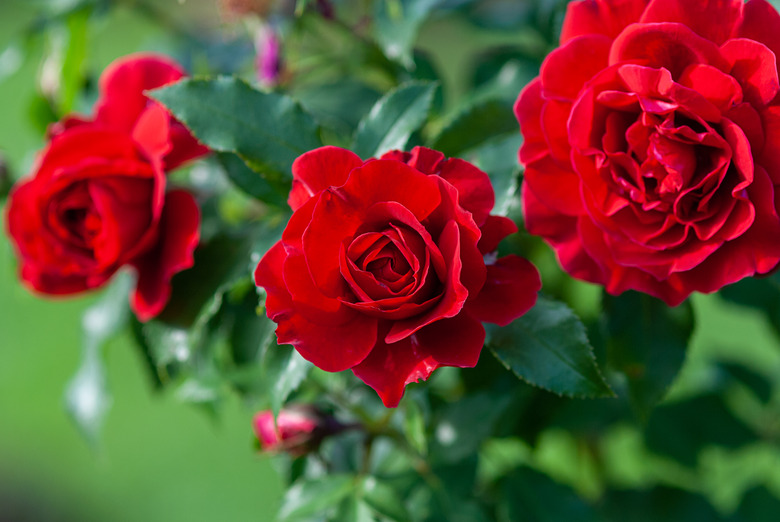How To Keep Bugs From Eating Rose Bushes
Roses (Rosa spp. and cultivars) may be the centerpiece of your garden, but if people "ooh and ahh" over a rose, so do multiple insects and pests of all kinds. Once these pests descend, you may find rose leaves that are black, chewed, malcolored, or distorted. Some pests can actually kill a rose cane.
Bugs That Eat Roses
Aphids, mites, and beetles are the most common pests that attack rose bushes, although there are others, including leafcutter bees and rose slugs (which are not actually slugs). It's tough to identify exactly what is creating the holes in your rose leaves, but some types of insect damage are easy to diagnose.
The first line of defense when it comes to rose pests is to inspect your bushes regularly. This helps you identify a problem before it becomes a full-blown infestation.
Aphids and Mites
Everyone knows what aphids look like. Aphids will weaken a plant, first shriveling the leaves and then leaving a black sooty mold. If an infestation is severe, they can kill entire rose buds and impact the size of a growing flower. Aphids are clearly visible and are widely considered the number-one nuisance when it comes to roses. They attach themselves to the underside of leaves or cover entire rose buds and shoots, especially in spring and summer. You can usually blast these off with a hose or introduce some of their natural enemies, which include parasitic wasps, ladybugs, and green lacewings.
Mites, which are so small you probably will not be able to see them without a microscope, tend to attack roses in hot, dry weather or when the bushes are stressed. Like aphids, they typically feed on the lower leaf surface. Two types of mites go for roses: the two-spotted spider mite and the southern red mite. To control mites, introduce beneficial insects, such as lacewings, ladybugs, and predatory mites, which prey on spider mites. You can also hose off mites to remove their eggs and larvae.
Fuller and Japanese Beetles
Beetles are next up to the plate. Many types of beetles go after roses, including Fuller rose beetles that leave a ragged edge on the leaves and Japanese beetles that can "skeletonize" a leaf, in which the leaf appears lacy and brown.
A ragged edge on a leaf may mean you have Fuller rose beetles, which also may eat the flowers. They feed at night, but they hide on the underside of leaves, so check your leaves carefully. Remove them by hand or hose them off. Larvae may be in the soil, so prune the lower part of the rose bush to prevent emerging adults from climbing up into the bush. Coat the trunk of the bush with sticky traps.
Japanese beetles are clearly recognizable with their orangey-copper colored back and blue-green head. They are also quite visible at about 1/2 inch in size. Remove these by hand. They can do a lot of damage in a short period of time, so quick action is important. Some experts recommend searching for them in the early morning or late evening.
Bees and Rose Slugs
Leafcutter bees cut nice bite-sized chunks from a rose leaf in a clean semicircle. They aren't eating this; they are using it to line their nests. Generally, no pesticide or other control is recommended because bees are important pollinators, and usually, the damage is minimal.
Rose slugs are not slugs but rather the larvae of sawflies, a member of the wasp family. The larvae of some species resemble a hairy caterpillar, while some are wet and shiny. Rose slugs usually do their damage at night, chewing into material between the leaf veins and leaving a lacy texture. Hand-pick rose slugs off the leaves or spray them off with water. You can also try insecticidal soap or horticultural oil.
